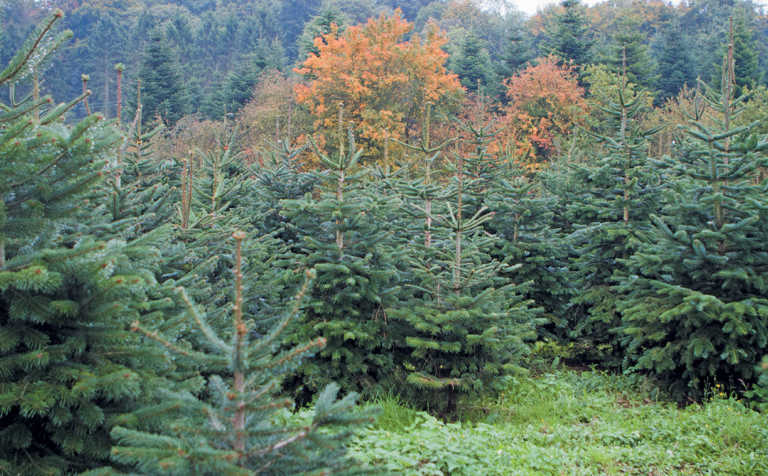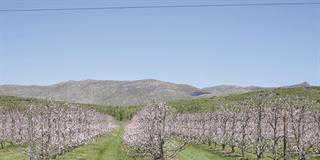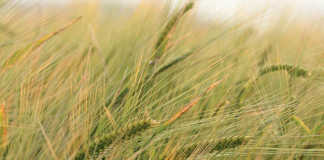
Photo: Sabrina Dean
In the UK, Christmas traditionally starts on the first day of December when Yuletide trees go up. And for Paul Mather, a Christmas tree farmer who has been involved in the industry for three decades, this is the busiest time of the year.
Paul is the forestry manager at Yattendon Estates in West Berkshire. The estate incorporates the business interests of Lord and Lady Iliffe. Among the 800ha of woodlands that Paul manages, 130ha are planted to Christmas trees.
At any given time, the forest contains more than half-a- million spruces at various stages of growth. Each year, between 45 000 and 50 000 are cut down and delivered to English homes.
Like other Christmas tree farms in the UK, Yattendon started out growing the Norway spruce (Picea abies). However, this spruce loses its needles quite rapidly after being cut down.
This did not pose much of a problem in the 1980s and 1990s, when most trees were bought from farmers later in December. However, when garden centres entered the retail Christmas tree market, the supply chain required a dramatic rethink.
“We were accustomed to supplying a few hundred trees to small marketplaces. Suddenly, we had to supply tens of thousands of trees to a single company,” recalls Paul.
With the country emerging from a recession, consumers were starting to demand better-quality products. This heralded a further change: people still wanted ‘real’ trees, but as perfectly shaped and durable as their fake counterparts.
The Yattendon team experimented with several species before settling on the Nordmann fir (Abies nordmanniana), which originates in the mountains south and east of the Black Sea, in Turkey, Georgia and Russia.
During the Cold War, it was easier to obtain seed from Turkey than from the then communist Soviet Union. However, there were two important differences between the tree varieties that grew in these two countries.
Firstly, the Russian variety comes into growth about three weeks later than that of Turkey, making it less susceptible to early frost damage, a major problem in Christmas tree production.
Secondly, the Russian variety is naturally smaller, making it more suitable for use as a Christmas tree.
Despite the difficulties involved, Yattendon managed to secure some Russian seed, and started growing small numbers of the Nordmann fir in the late 1980s.
By 1992, one year after the Cold War ended, the seed was readily available, and Paul and his team started phasing out production of the Norway spruce, which today comprises only about 7% of their offering.
Planning for the future
In 1995, Yattendon management undertook a complete revamp of its business and farming approach. One of the first actions was to halt planting on poor lands, particularly those with underlying chalk.
“All the land in the south of England has chalk under it, but what’s important is how far down it is,” he explains. “The Nordmann fir comes from an area where chalk is unknown, so it was like battery acid to them. It turned them yellow and killed them.”
To avoid this problem, the trees are planted only in fields where the topsoil layer is at least 2m thick. Originally, the trees were grown from seed; nowadays, however, nursery-grown saplings are used instead.
The nurseries grow these saplings from seed for two years before replanting them to grow for another two years. This stunts tree growth and helps with root development.
The nurseries offer first- and second-generation planting material. According to Paul, second-generation saplings tend to produce well-shaped trees, but these tend to be less resistant to disease.
For this reason, he prefers first-generation stock, despite the potential of greater variation in appearance.
“You can’t sell a diseased tree, but you can still sell a tree that’s not so bushy,” he explains.
Tree management
The trees are purchased in February, and remain in cold storage until October, when they get planted out. Soil temperature peaks in November after the warmth of summer, and this encourages root development in the freshly planted trees, explains Paul.
The trees are planted at an intra-row spacing of 1m, and an inter-row spacing of 1,2m. They do not tolerate high moisture levels or very sandy soil, but, on the other hand, do not need nutrient-rich soil.
“They are used to growing on mountainsides,” he says.
Paul and his team carry out fertilisation annually, adding nitrogen to ensure a good green colour.
Pheromone traps are used to trap and subsequently identify pests, but the greatest threat,
after early frost, is fledgling birds in the spring. These seek the highest point and land on the tender leaders, damaging them.
Paul has managed to reduce the problem by using bird sticks (small, metal, windmill-like devices that deter the birds), as well as perches attached to the high points of the trees.
These provide alternative perching spots and help keep the birds away from the leaders.
According to Paul, these methods have reduced losses by 90%.
The trees are nurtured, pruned and shaped for between eight and 10 years, depending on the desired size, before being harvested. A growth inhibitor is used to prevent the leader from growing too tall and to encourage the development of scaffold and lateral branches.
The Christmas rush
On 5 November, the estate starts cutting down thousands of trees a day to get them to the shops on time.
During this time, Paul employs a crew of 30 seasonal workers, who work in five teams of six. Each team is expected to cut down 2 000 trees per day, remove them to the yard, and place them on pallets or trollies for distribution.
Timing is crucial during the entire process. The trees cannot be cut too down early as they need to last until after Christmas. Equally, they are products that suddenly become redundant.
“After midnight on the 24th, they have no value,” says Paul.
Email Paul Mather at [email protected], or David Slack, managing director of Yattendon Estates, at [email protected].













